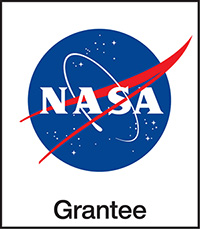Full Educator Guides
CONTEXT SETTING
ACTIVITIES
CONTEXT SETTING
ACTIVITIES
ACTIVITIES
How to Teach These Units
Take a little time to prepare and get ready to teach. The pages linked below give you an easy-to-follow checklist and resources that get you prepared for facilitating PLANETS activities.
5. Cliffs and Craters: Exploring Topography on Mars
Learners interpret topographic maps of Mars to identify safe and interesting landing sites.
Guiding Question
How can topographic maps help us choose a safe and interesting landing site on Mars?
Activity Downloads
- 1
- 2
- 3
- 4
- 5
- 6
- 7
 Activity Timing
Activity Timing
10 MIN. Get Ready & Team Up
25 MIN. Analyze Landing Sites
10 MIN. Reflect
45 MIN. TOTAL
Setup: Prep Time 30 min
- Print resources.
*See Materials & Preparation in the Educator Guide linked above for full info.
21st Century Skills
- Critical Thinking
Science Practices
- Analyzing & Interpreting Data
- Planning Investigations
Learners Will Do
- Interpret topographic maps of Mars to identify flat areas and landforms.
Learners Will Know
- Scientists use topographic maps to make decisions.
Connecting Across Activities
- Activity 4: Introducing Topography: Last time, learners deepened their understanding of landforms by considering topography.
- Activity 5: Exploring Topography on Mars: Today, learners interpret topographic maps of Mars to locate interesting landforms and to determine the safest place for a rover to land. These maps are the second set of data they will use to choose a landing site.
- Activity 6: Introducing Spectroscopy: Next time, they will learn how to interpret spectra of light reflected from various objects, which will later help them identify minerals from a distance.
Related Videos
Using Light to Measure Distance (LiDAR theory)

Using Light to Map Surfaces (LiDAR Uses)


Using Light to Measure Distance (LiDAR theory)

Using Light to Map Surfaces (LiDAR Uses)
Level Up!
- Although this activity lists two possible landing sites, if you have time, the activity is more interesting and enriching with four choices. See the educator guide for the additional landing site data and directions.If you are using the advanced version of this pathway with four possible landing sites, use the advanced version of the (PDF) Science Activity 5 Mars Landing Site Topography Data Packet and add columns titled “Nili Fossae” and “Iani Chaos” to the Our Ideas poster.
- The Engineering Pathway, Worlds Apart: Engineering Remote Sensing Devices, goes into detail on how LiDAR works and challenges learners to engineer a model LiDAR device to capture the topography of a surface.
- Although this Activity lists two possible landing sites, if you have time, the activity is more interesting and enriching with four choices. See the website for the additional site data and directions.
- Tell learners that scientists often like to explore areas with steep slopes or rugged topography, where layers of rock might be exposed. Have them think about why these areas are interesting. (5 min.)
- Invite a family or community member to come in as a special guest and share their knowledge about hazard-related topics. See the flyers and ideas on the Remote Sensing Family and Community Connections (weblink) (45 min)


